Research Article
Volume 2 Issue 1 - 2019
Comparing the Effectiveness of Fascia iliaca Block with Standard Analgesia in neck of Femur Fractures in a District General Hospital Emergency Department- a Prospective Study with Review of Literature.
Emergency Medicine Department, University Hospital Ayr, Scotland
*Corresponding Author: Debkumar Chowdhury, Emergency Medicine Department, University Hospital Ayr, Scotland.
Received: July 16, 2019; Published: July 24, 2019
Abstract
Introduction: The incidence of hip fractures is increasing as the population ages with current estimates of 101 000 per year by the year 2020 in the United Kingdom. Pain has both a physiological and a psychological component to it. Early and effective analgesia has been proven to benefit patients and possibly lead to earlier return to baseline function. Through the years fascia iliaca blocks (FIBs) have been used as an adjunct management for analgesic relief in neck of femur fractures
Method: We carried out a preliminary study to assess the use of stickers to document various measures of pain management. There was patchy uptake of the aforementioned stickers, we subsequently reverted back to the use of our pre-existing hip fracture proforma for documentation of pain scores. There were two main parameters measured in our study in our Emergency Department in our District General Hospital. The first parameter was the time to reassessment from initial assessment. The second parameter was assessing the effectiveness of FIBs and the associated pain scores. In total we had 42 patients included in our study over a 6-month period with 25 patients undergoing FIBs.
Results: The average time to reassessment was noted to be 72 minutes. In patients that underwent FIBs there was a 41.8% improvement in pain scores. From the study we noted that 9 patients refused to have the FIB (21.4%). From the 25 patients that underwent FIB, it was noted that 11 patients had no improvement of their pain scores from the pain score at reassessment (44%). However, it is worth noting the longer acting nature of the FIB provides patients with pain relief for longer periods especially if there is a delay to theatre.
Conclusions: FIBs provide an effective adjunct to analgesia. We identified various measures that could be implemented for better analgesic control in patients with neck of femur fractures. We hope to undertake studies with larger number of patients to better assess the effectiveness of FIBs.
Keywords: Fascia iliaca block; Neck of femur fractures; Analgesia; Quality Improvement
Introduction
As the demographic of the population changes to a greater prevalence of the elderly population the incidence of neck of femur fracture increases. In 2016, there was over 65,000 people aged 60 years and older that presented to hospitals in England, Wales and Northern Ireland [1] with hip fractures. This number is said to reach an incidence of 101 000 by the year 2020 [2] the total annual cost in the management of hip fractures is estimated to be more than £ 2 billion.
Pain has both physiological and psychological components. The pain following hip fractures has been linked to altered physiological states leading to the development [3] of delirium, depression and sleep disturbance, thereby highlighting the important of effective management from admission through to rehabilitation. Since the inception of fascia iliaca block (FIB), this has been widely used in all patients with confirmed neck of femur fractures unless there has contraindications.
With the ageing population, the prevalence of cognitive impairment in the population will also rise, with this the co-existing morbidities will also rise. With this the incidence of polypharmacy, the effective analgesia that can be provided in addition to the regular prescribed analgesia is somewhat limited.
Contraindications to having FIB include patient refusal, underlying cognitive impairment (procedure made complicated due to inability to stay still), underlying coagulopathy and if patient on oral anticoagulants as this would increase the chance of bleeding. The contraindications differ if the procedure is done via the landmark method or through ultrasound guidance. In our department the landmark method is used.
The Study
We had 2 distinct parameters that we measured in our Emergency department at University Hospital Ayr. The first parameter that we measured was the time to reassessment and the pain scores at reassessment, the RCEM guidance states that patients with severe pain need to be assessed within 60 minutes.
We had 2 distinct parameters that we measured in our Emergency department at University Hospital Ayr. The first parameter that we measured was the time to reassessment and the pain scores at reassessment, the RCEM guidance states that patients with severe pain need to be assessed within 60 minutes.
The second parameter was the analgesic effect that FIB had on pain relief. We used these values to perform a comparative analysis of the pain scores. We calculated the percentage change in the level of pain for both patients receiving FIB and those patients not suitable for FIB. A simple pain score tool was used, in which patients would denote their pain score from 0- no pain 10- severe pain.
The Scottish standards of care for hip fracture (2016) [4] advises that patients with confirmed diagnosis of hip fracture should be transferred within 4 hours to the acute orthopaedic receiving ward unless requiring essential medical interventions.
In our hip fracture ED proforma there is an allocated space for documenting the analgesia the patient has received. We underwent a trial to ascertain if the use of additional pain management stickers would be more effective than using our longstanding hip fracture proforma.
We found that the uptake of the stickers was patchy and at times of severe bed wait pressures, the uptake was limited. From the completed records, it was noted that there we were not meeting the 30 minutes target set by the RCEM for administration of analgesia for severe pain.
We reverted back to use of our longstanding hip fracture proforma with clear instructions sent out to all clinicians that the pain scores and analgesia given need to be clearly documented. Whilst this was ongoing, our nursing staff were working on improving documentation of the time analgesia was given and amendments were made to the proforma.
We also carried out a study comparing the effectiveness of analgesia provided by standard pain management with the analgesia provided with FIB.
| Background analgesia and regular prescribed analgesia |
| Perception of pain in different circumstances |
| Reported level of pain pending on level of cognitive impairment |
| Interplay between co-morbidities and the effect of analgesia |
| Analgesia given prior to presentation to ED |
Table 1: Summary of factors influencing the level of analgesia.
Results and Analysis
The preliminary study included a small cohort of patients to assess how well the 2 parameters could be assessed.
The time for reassessment of pain score was average at 72 minutes. This is approximately 12 minutes greater the RCEM guidance of 60 minutes. However, we noted that was a 43.4% improvement in pain score on reassessment.
In patients with low pain scores 1-3, the effective analgesia that FIBs can provide can be limited. However, the more important aspect to consider the duration of time that the analgesic relief that can be gained from FIBs. This is particularly important in reducing pre-operative analgesia and post-operative analgesia requirements as highlighted in the article.
Fascia Iliaca Blocks
In the UK as part of the post graduate curriculum in the Foundation Training Programme in emergency medicine, the ability to perform FIBs are emphasized upon. In our department, the trainees on rotation and taught and assessed on their ability to perform FIBs and they develop a level of competency in performing this. Until recently this was a procedure performed by anaesthetists and orthopaedic surgeons. FIBs are the current recommendation for hip fractures unless there are any contraindications for this procedure.
In the UK as part of the post graduate curriculum in the Foundation Training Programme in emergency medicine, the ability to perform FIBs are emphasized upon. In our department, the trainees on rotation and taught and assessed on their ability to perform FIBs and they develop a level of competency in performing this. Until recently this was a procedure performed by anaesthetists and orthopaedic surgeons. FIBs are the current recommendation for hip fractures unless there are any contraindications for this procedure.
The National Institute of Health and Care Excellence (NICE) recommends that simple analgesia should be used with fascia iliaca blocks used as an adjunct [5]. In 2016 Callear., et al. [6], evaluated the proportion of patients receiving FIB as well as the efficacy of these block with pre and post-operative opioid analgesia amongst other measures. The outcome from the study was noted that a single dose FIB given in the pre-operative period reduced both post-operative and the overall requirement of analgesia. An interesting fact to note is the reduction in the rates of delirium and length of hospital stay.
In a systematic analysis by Steenberg., et al. [7] in the British Journal of Anaesthetics revealed a superior analgesic effect of FIB when compared with opioids. It also noted that patients that received FIB has lower pre-operative analgesia requirement and longer time to first request for analgesia.
The studies also indicated that with any movement, in patients receiving FIB the pain scores were reasonably lower than other modes of analgesia. Studies comparing analgesia effect of FIB with NSAIDs demonstrated a significant greater analgesic effect with FIB compared with NSAIDs.
| Percentage improvement | Number |
| No change/improvement | 11 |
| 1-50% | 5 |
| 51-99% | 2 |
| 100% | 7 |
Table 2: Percentage improvement in pain post FIB.
The above table highlights that in 11 out of 25 patients (44%) of patients there was no change or improvement in the pain score. However, it’s worth noting that in 6 out of these 11 patients (54.5%) the pain at reassessment was 0. The readers may agree that FIBs should still be indicated in these 6 patients as means of longer acting pain relief. This is especially the case if the patients were not operated on immediately. From the overall perspective there was a percentage improvement in pain post FIB 41.8%
The average to having a FIB done was noted to be 132 minutes, the RCEM does not have an exact time frame to have procedure done. On certain occasions the procedure was performed within the hour, however in certain cases there was delay in the procedure being done due to various factors.
From the 42 patients in our study 9 patients (21.4%) refused to have procedure done, according to the RCEM guidance this is an absolute contraindication to the procedure. Performing FIBS using the landmark process, patients being on oral anticoagulants is a relative contraindication, this constituted another 4 patients (9.4%).
Identified potential scopes for improvement in future studies
We identified that there were certain flaws in our method which could be looked in the future studies. The main flaw was pain assessment in patients with cognitive impairment where a verbal response was not reliable.
We identified that there were certain flaws in our method which could be looked in the future studies. The main flaw was pain assessment in patients with cognitive impairment where a verbal response was not reliable.
As our readers may be aware that in all Emergency Departments in the NHS (National Health Trusts) have a 4-hour target within which the patient presenting to the Emergency Department needs to be assessed, treated and subsequently referred/discharged.
In our Emergency Department we have a 2-hour time target within which the assessment and preliminary treatment of patients with neck of femur fractures are carried out. We have a fast track system where having been assessed and stabilised they are admitted directly to our orthopaedic ward. If a hospital bed were to be made available on the trauma and orthopaedic ward, the patient would be treated and transferred to the ward within the 2-hour period. This would make data collection with regards to the analgesic effect of FIB difficult to collate.
As highlighted in our study the average time to having the FIB performed was 132 minutes which would breach our 2-time target, however this was noted to be multifactorial. We propose performing the FIBs soon after triage in any suspected neck of femur fractures unless there are any contraindications in our future studies. We could then possibly assess the further analgesia requirement if our FIBs did not work.
We also suggest the level of pain experienced by patient may be influenced by the level of background analgesia. Within our patient study group, co-existent painful conditions such as osteoarthritis and inflammatory arthropathies were prevalent. These patients were invariably on a wide range of analgesia with a significant proportion of patients on long term analgesia. We hope the readers will appreciate the complexities involved in considering the aforementioned issue.
Conclusions
Fascia iliaca blocks provide effect analgesia in the vast majority of patients with neck of femur fractures. Through this study we have highlighted the importance of early and effective analgesia in patients with significant pain scores leading to patient wellbeing. We have also highlighted a number of measures that could be undertaken to further improvement patient experience and eventually lead to improvement in patient recovery.
Ethics
There was no patient identifiable information noted in this article.
There was no patient identifiable information noted in this article.
Funding
There was no funding applied for this article.
There was no funding applied for this article.
Conflicts of interest
There were no conflicts of interest identified.
There were no conflicts of interest identified.
References
- https://www.nhfd.co.uk/
- British Orthopaedic Association. “The care of patients with fragility fractures”. (2007): 4.
- “The management of chronic pain in older persons: AGS panel on chronic pain in older persons: American geriatrics society”. J Am Geriatr Soc 46.5 (1998): 635–51.
- http://www.shfa.scot.nhs.uk/_docs/20161109_SSC_for_Hip_Fracture_Patients.pdf
- NICE. “The management of hip fractures in adults”. (2014): 7-9.
- Callear J and Shah K. “Analgesia in hip fractures. Do fascia-iliac blocks make any difference?” BMJ Open Quality 5 (2016): u210130.w4147. doi:10.1136/bmjquality. u210130.w4147
- J Steenberg and AM Møller. “Systematic review of the effects of fascia iliaca compartment block on hip fracture patients before operation”. Br J Anaesth 120.6 (2018): 1368–1380.
Citation:
Debkumar Chowdhury. “Comparing the Effectiveness of Fascia iliaca Block with Standard Analgesia in neck of Femur Fractures in a District General Hospital Emergency Department- a Prospective Study with Review of Literature.” Anaesthesia, Critical Care and Pain Management 2.1 (2019): 13-18.
Copyright: © 2019 Debkumar Chowdhury. This is an open-access article distributed under the terms of the Creative Commons Attribution License, which permits unrestricted use, distribution, and reproduction in any medium, provided the original author and source are credited.













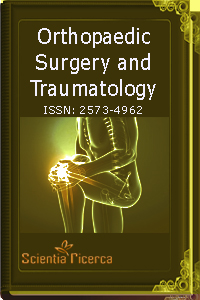


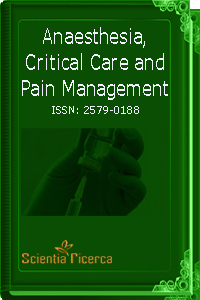


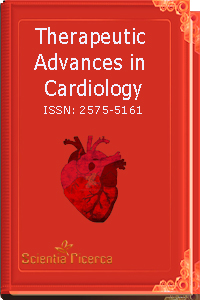








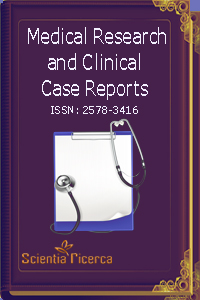
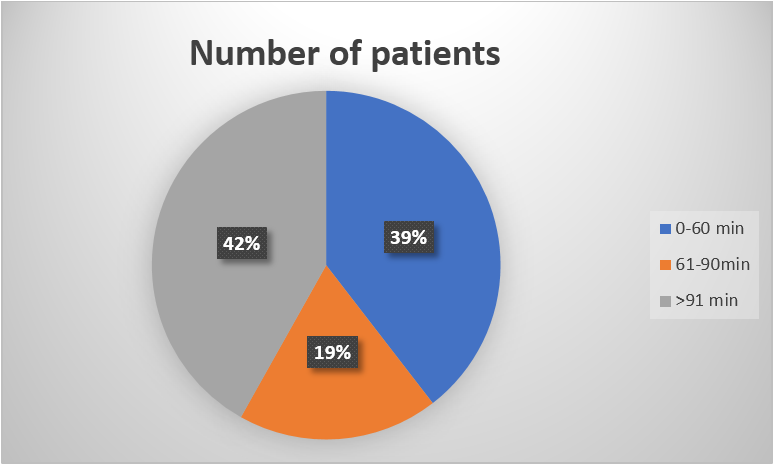
 Scientia Ricerca is licensed and content of this site is available under a Creative Commons Attribution 4.0 International License.
Scientia Ricerca is licensed and content of this site is available under a Creative Commons Attribution 4.0 International License.